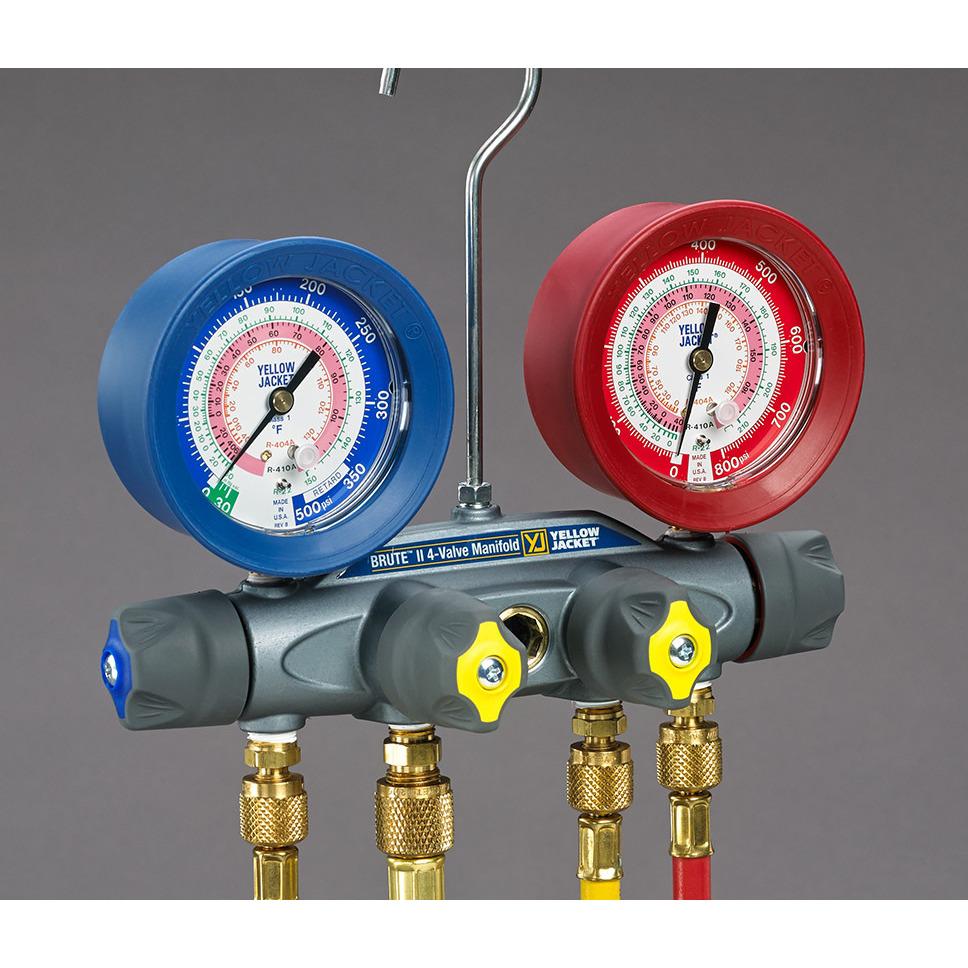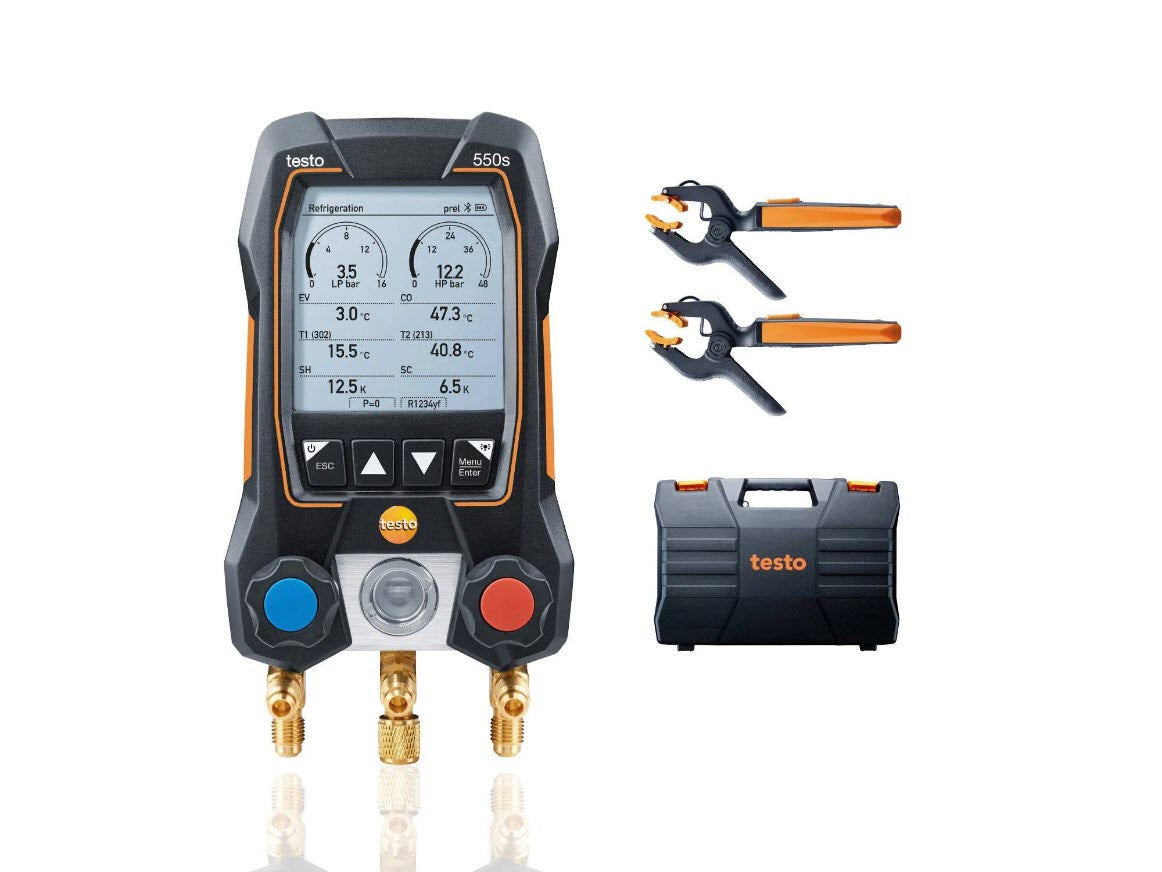
Learn the Difference Between Analog and Digital HVAC Gauges
Most HVAC experienced professionals should have at least two, if not three, sets of gauges on hand. Although it may depend on the nature of their work. Different gauges may be more compatible with multiple types of HVAC units. As a result, there's no obvious answer to the question of which gauge type is better. Let's look more closely at both categories. Let's learn how you may use them to identify the best solution for your needs.
You'll need two or three sets of gauges, depending on what you're doing. Some technicians prefer to have two sets of tools: one for 410 refrigerant machines and another for R22 refrigerant devices. However, because there are so many various types of refrigerants currently, having a set of gauges for each is impractical. Most folks will only require one pair of digital gauges and one set of traditional gauges as a backup.
Using Analog and Digital HVAC Gauges
For testing and regulating the charge, digital gauges are significantly superior. They're a must if you want precise superheat and subcooling data. Temperature clamps attach to the liquid and suction lines on digital gauges, including built-in pressure-temperature charts. Inform the gauge set what refrigerant you're testing. Connect the hoses and temperature clamps. Then, get real-time superheat and subcooling readings. The margin of error is astonishingly small.
You'll have to read between the lines of the needle and the gauge lines if you're using analog gauges for essential charging. Once you've guessed the pressure, you'll need to use a point chart to calculate the temperature equivalent. After you've gotten that number, you'll need to take a temperature reading on the proper line and subtract the two. There's a good chance you'll misunderstand something, make a math error, make a pt chart conversion error, or a combination of the three. Even if you get everything right, there's a strong chance the system pressure or temperature altered between all of the measurements. This adjustment alone will result in four to five degrees of inaccuracy. When you're talking about subcooling number objectives of 10 or 12 degrees, and you're six degrees off, that's a big deal.
Analog HVAC Gauges
Like digital manifold gauges, Analog manifold gauges will precisely monitor refrigerant pressure after and before the compressor. After you've taken the two measurements, you'll need to do some arithmetic to see if there's enough refrigerant in the system to maintain the air conditioning unit running smoothly and safely.
It all comes down to you: can you read the dials accurately and conduct the extra computation to estimate the system's requirements? You're good to go if you can do it. However, no matter how good you are, you have a significantly higher probability of making mistakes. You could misunderstand the gauge readings, create a pt chart conversion error, or even make a mathematical mistake. Most analog gauges have numerous segments on their dials, and you'll need to know how to read them and which area of the dial corresponds to your measurement.
Let's imagine you get all of these readings correct; there's a chance the system temperature or pressure changed while taking these measurements. Such adjustments could result in a large five-degree margin of error.
The majority of analog gauges are designed to work with a specific refrigerant. As a result, you may need to carry a variety of gauges to be ready to handle any refrigerant you come across. Other operations in which you can utilize the meters include evacuation and leak testing.
Digital HVAC Gauges
Digital gauges provide precision and speed. They are far superior if the charge needs to be tested or adjusted. These gauges come with temperature clamps linked to the suction and liquid lines, as well as built-in temperature-pressure charts. These features make it possible to read the reading more accurately and quickly than looking at an analog needle. All you have to do is connect the clamps, and you'll have live lessons in seconds. The margin of error has shrunk dramatically.
What HVAC Experts Prefer
If dealers wish to continue selling that brand, some manufacturers compel them to charge with digital gauges. These policies are typically in place since manufacturers have received warranty returns due to incorrect billing methods rather than actual faults. As a result, requiring digital gauges is a (usually successful) attempt to overcome warranty returns and maintain the company.
However, analog gauges have their purpose, particularly if you're working on a system with a bad burnout that's turned the oil into acid. You won't be able to fit this into your $400 digital gauge set, so you reach for the old analog gauges. When a digital set fails, the analog is a fantastic backup option.
Analog or Digital: Which Refrigerant Gauge is the Best For You?
It can be difficult to choose between an analog and a digital gauge. It's impossible to say which gauge is preferable. While digital HVAC gauges are more popular and convenient, analog gauges can be just as good or even superior in some instances.
Before deciding on the best HVAC gauge for the job, you must first examine your application's specific requirements and weigh the benefits and drawbacks. Some technicians might be able to carry both.
HVAC Shop will help you through our experts that are more than willing to help you out. Please contact us today for more information.



